Museum of Natural History Expands Into 21st Century
Director Karl Hutterer Lays Out Institution’s Hopes for Significant Upgrades and Growth
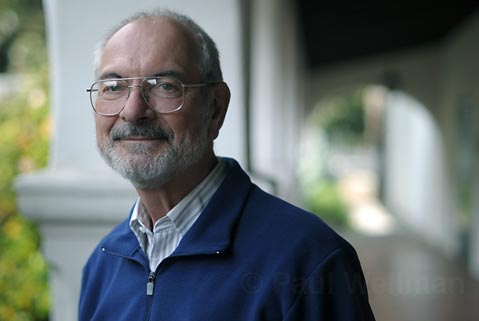
When Karl Hutterer started his job as director of the Santa Barbara Museum of Natural History 10 years ago, his first extensive walking tour of the Mission Canyon institution revealed crumbling buildings, cramped quarters, and a confusing layout. It only got worse come the winter, when staffers ran around with buckets to collect rainfall that dripped from leaky roofs. “I was really shocked,” explained Hutterer, who recalled thinking, “This is in serious need of major work.” Little did the bearded, bespectacled former professor of ethnography and archaeology know that it would be nearly a decade — and an extensive, expensive renovation of the museum-owned Ty Warner Sea Center on Stearns Wharf — before he’d be able to focus on fixing the main campus.
Today, after more than a year of strategic planning and neighborhood outreach, Hutterer is finally prepared to make public the plans he’s developed with the help of staff, the board of trustees, and members of the community. “I’ve always felt very passionately that you don’t plan buildings, you plan programs,” he said. “Then you plan the buildings to fit the programs.”
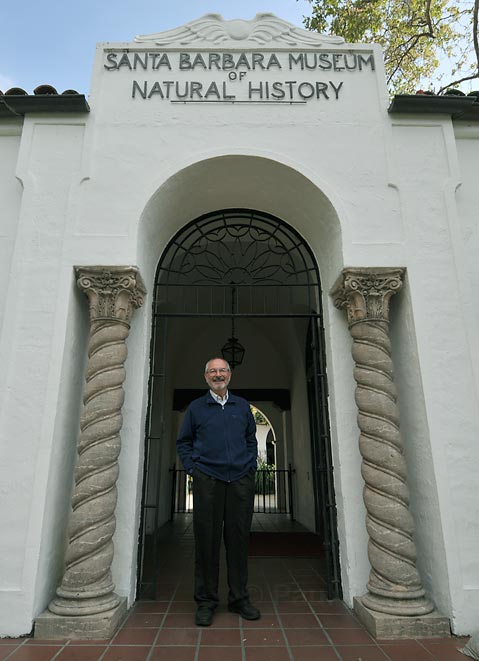
In short, those new and replaced buildings — save for the “historic architectural core” and an outlying structure or two, much of the existing campus would be torn down — will represent about a 50 percent bump in square footage, but less than a 25 percent increase in the building footprint. The new development would remain on the exact zone where there are currently buildings, and the style would remain residential and low-lying in appearance. But it’s not just construction and rehabilitation of the buildings that’s being proposed — the creek corridor will be restored, the existing oak woodlands will be preserved, the parking lot will be made into a more “garden-like” setting with bioswales to deal with run-off, and the traffic would be re-routed to make more sense and impact the neighborhood less.
While there will certainly be some nay-saying neighbors and citizens who are critical of the project when it finally gets unveiled to the general public during presentations on June 3 and 5 — this is Santa Barbara, of course, and Mission Canyon residents can be the most opinionated around — the museum’s plans have only so far been presented in five neighborhood meetings, including a presentation to the Mission Canyon Association on Thursday, April 22. During those, opposition has been light, mainly coming from “people who object to any change at all,” said Hutterer, though others have wondered whether they’ll still be able to walk their dogs (they will, he promised) and whether noise, traffic, and lighting will get worse (they won’t, he assured). At Thursday night’s meeting, the association members — who have fought the nearby Santa Barbara Botanic Garden expansion tooth and nail and then some — seemed mostly encouraging, explained museum spokesperson Easter Moorman on Friday.
A Strategic Reinvention
The early support is no doubt related to Hutterer’s inclusive, collaborative, and transparent approach, which began with a strategic planning process in 2008. Calling it a “very comprehensive effort,” Hutterer enlisted the entire board and staff, conducted 100 community interviews, commissioned market studies, and analyzed comparable institutions in other cities to determine what was needed. During this introspective period, Hutterer and company came to the realization that a natural history museum’s role is no longer what it was when these types of institutions began proliferating 150 years ago, when European and American explorers wanted to showcase their bizarre discoveries from around the globe.
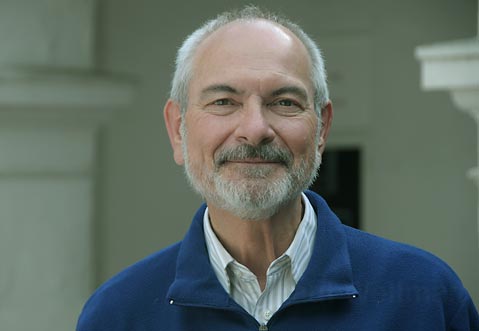
“We are no longer looking at a world of abundance we can wrap our arms around,” said Hutterer. “We are looking at a world in crisis, in dire crisis, and we still don’t understand the systems we live in.” Under that context, the team’s reexamination of what it means to be a 21st century natural history museum led to the determination that collections, conservation, and community awareness-raising were the true future goals. “We are trying to reinvent ourselves,” admitted Hutterer, who said this understanding puts the museum on the “leading edge” of institutions worldwide. “We’re not throwing away our history. We are embracing it, but we’re reinventing ourselves on our foundations.”
Equally important was relating the museum’s future to the desires of everyday Santa Barbara residents, who make up the bulk of the 140,000 visitors who use the institution’s facilities in one way or another every year. “We understand that we serve our community,” said Hutterer. “We are not an institution of our own purpose.” As such, the museum team began door-to-door outreach effort more than a year ago and relied on the market analyses to determine what was truly needed and what was not.
What they quickly found was that the museum has pretty much maxed out when it comes to visitors, so despite the sure-to-be-jaw-dropping cost — estimates currently range wildly, from tens of millions to more than $100 million — Hutterer assures that there will not be a drastic jump in attendance. In fact, the museum isn’t even seeking to raise the allowed levels of their existing conditional use permit (CUP). “We currently have a CUP we feel we can live with,” said Hutterer. “We have been staying for the past 20 years within our CUP, have never exceeded it, and don’t plan to exceed it.” Though he acknowledges such a concession may seem placatingly “virtuous,” Hutterer said it’s also based in their market research, admitting, “We do not have much opportunity to grow in terms of attendance.”
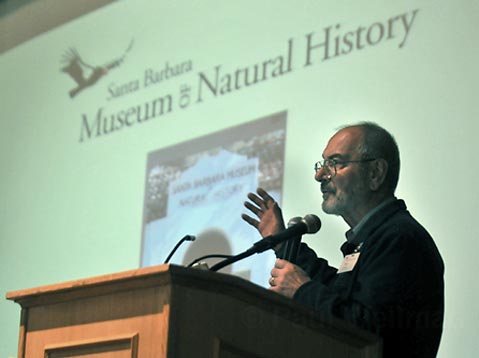
So why spend so much money on such an elaborate plan? “Because we have to,” said Hutterer. “Our museum is falling apart.” Considering that any renovation project is going to be expensive and extensive no matter how it’s carried out — they’ve actually done the math, and knock-down/rebuild of the existing campus would be about as expensive as their expansion plans —the museum team figures that they might as well improve the museum in as many ways possible. “We want to do it right and set an example for museums around the country,” said Hutterer.
Building Bigger and Better
As Hutterer’s first walking tour revealed, the museum needs renovations as soon as possible. “Many of our buildings are in an incredibly decrepit state,” he said, adding that some were also built “in a way that’s offensive to the environment,” specifically those newer buildings — including Hutterer’s own office—that were constructed closer to the creek in the middle of the 20th century “before people had developed the environmental sensibilities they have today.”
But eco-mindedness aside, the day-to-day operations of the museum are hampered. “Every repair becomes a monster project,” he said, explaining how a recent window replacement project quickly became a wall rebuild before turning into an entire building reconstruction. “That just destroys our budget and makes it impossible to plan.” Among other travesties, there are leaks in the beautiful Ray Strong dioramas, insects infesting the exhibits, staircases on the verge of collapse, and termites galore. On top of that, the museum’s fire protection plan sucks and the campus layout is “really squirrelly.” Altogether, said Hutterer, “We’re not treating our visitors well.”
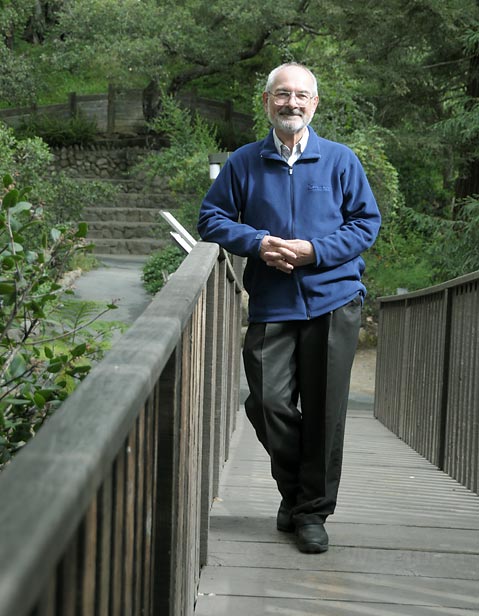
There are 15 concepts on the museum’s official wish list, ranging from riparian restoration and woodland conservation to visitor amenities (i.e. more bathrooms, perhaps a café), safer pedestrian corridor, better stormwater runoff, and, ahem, basic building compliance. “None of our buildings comply with current codes,” admitted Hutterer. “And none comply with professional museum standards.” But they want to go further than simple compliance, and are aiming at becoming certified as LEED Gold or Platinum, the epitome of sustainable design. “If anyone needs to be an example of good stewardship,” he said, “it’s us.”
The historic core — which includes Fleischmann Auditorium, the main entrance, the little courtyard, and the connected buildings that line the street — will be refurbished, but some of the buildings that have been tacked on over the years will be torn down, as will the entire western campus not connected to that complex. Aside from moving the historic MacVeagh house to the northwest corner of the property, the only new construction would occur exactly where that current western campus sits. The new construction will increase the overall footprint by 13,637 square feet, but the actual square footage will bump from about 82,000 to 119,000 square feet.
The reason the footprint is proportionally less is because much of the new square footage will be taken up by basements that will be used for collections, which will be better served by an underground setting and much more protected from fire. The collection areas represent one of the biggest square footage increases, which is a good thing. “Our collections keep growing and thank God they do, “said Hutterer, who’s also excited about a related loading dock. “That means we’re doing our jobs.”
The biggest overall expansion, however, will be in what Hutterer has labeled the “support” category, which will go from 14,000 to 33,000 square feet, a roughly 70 percent jump. That includes more bathrooms, electrical and mechanical hubs, thicker walls, and janitors’ closets. “That is stuff mandated by code,” said Hutterer. “We don’t have a whole lot of choice.”
Presenting the Plans
Just after the June 3 and 5 presentations to the public — which should also feature the first architectural renderings available — the museum’s plans will get their first official vetting on June 17 at a joint meeting of the City of Santa Barbara’s Historic Landmarks Committee and Planning Commission. (The museum straddles the city-county line, but the city has agreed to be the lead agency.) Hutterer remains hopeful that the early support will continue, but is well aware that some hurdles will certainly pop up.
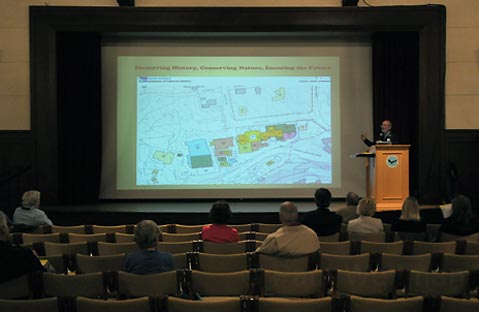
For instance, the museum — like most institutions that host events and loads of visitors yet remain located in a residential neighborhood — has managed to arouse suspicions and anger in some neighbors, both the grumpy and legitimately peeved types. But in his decade of work, Hutterer has tried hard to defuse those situations. “We really try to be good neighbors,” he said, explaining that he maintains an open door policy for anyone with problems, promising to always personally return emails and phone calls. That’s the attitude that empowered the extensive outreach campaign, which Hutterer said has resulted in “some kudos” from the neighbors.
There’s also the sensitive sticking point of trees, and whether the museum will be able to save everyone’s favorite oak. “We’ll try to preserve as many trees as we can,” promised Hutterer, who said they’ve been moving buildings around to avoid the large oaks but inferred that there may indeed be casualties in the development envelope.
Hutterer has also “kept a careful eye” on the Santa Barbara Botanic Garden’s expansion project, which is located a mile or so up the road, but seems worlds away when it comes to relationships with the community. Perhaps it’s because the Garden is further down the road with their development plans — they hit the Board of Supervisors on May 4 after an already contentious couple years of government meetings — but it seems that Hutterer has taken truly their travails to heart and tried diligently to avoid the ire stoked by the Garden’s with-us-or-against-us approach.
Regardless of the Garden’s woes, Hutterer believes he would have proceeded in this careful, community-minded fashion no matter what, as he did the same thing during his 10 years as director of the Burke Museum of Natural History and Culture in Seattle, where he was prior to his current post in Santa Barbara. “We would have done it this way anyway because that’s the way I’m built,” he said. Thanks to Hutterer’s build, the Museum of Natural History just might find themselves a relatively smooth path to their own buildings in the future.



